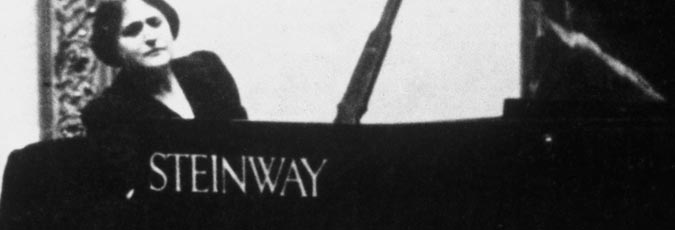When the Second World War broke out, the government closed London's music halls, theatres, galleries and museums to avoid mass casualties in case of bombing raids.
The National Gallery's central London position made it vulnerable to attack and it too was closed. Most of its paintings were moved to safe storage outside the capital.
Londoners were thus starved of cultural pursuits and it was at this point that the celebrated pianist Myra Hess had the revolutionary idea of using the Gallery as a venue for classical music concerts.
Hess approached the Director of the National Gallery, Kenneth Clark, who was delighted with her proposal. Clark gained the necessary permission from the wartime government and the Gallery was hastily converted into a concert venue.
Hess and friends from the world of classical music staged concerts for the whole of the wartime period. From October 1939 there were daily performances from Monday to Friday, every week of the year and even during the Blitz.
The performers at the concerts were a mix of famous names and unknown faces, including musicians drawn from the ranks of the Royal Air Force (RAF). The playlist featured popular works by Beethoven, Mozart, Bach and Brahms.
Myra Hess's aim was to make classical music available to all and her concerts were a roaring success – long queues formed outside the Gallery in Trafalgar Square. The concerts did much to boost the morale of ordinary Londoners at a time of 'cultural black-out' and were attended by a total of 750,000 people over six and a half years.
The last concert took place in April 1946, well after the war had ended. Londoners campaigned to keep the concerts going but the paintings returned and the National Gallery once again became an art gallery.
To commemorate the Myra Hess era, the National Gallery staged its first Myra Hess Day in 2006, now an annual event with performances by Myra Hess’s pupils, including the distinguished pianists Stephen Kovacevich and Richard and John Contiguglia.

